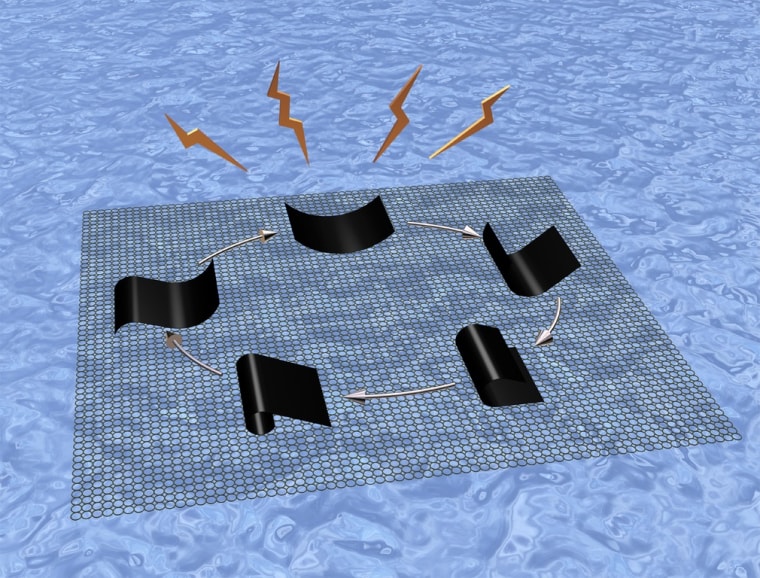When scientist Mingming Ma interlocked two different polymers in hopes of creating a new type of electrode to stimulate atrophied muscles, he made something more powerful: an artificial muscle, or actuator, that can generate electricity by drawing on water vapor.
“The first time I synthesized this material, I put the film on my hand and I found it was just moving by itself,” the chemical engineer at MIT’s David H. Koch Institute for Integrative Cancer Research told NBC News. “That was very surprising, so I decided to find out why.”
Ma and colleagues discovered the material changes its shape after absorbing tiny amounts of water vapor. It curls up and down as it absorbs and expels the moisture. Harnessing this movement could, for example, drive robotic limbs or generate enough electricity to power small sensors.
To generate electricity, the artificial muscles are attached a piezoelectric material that converts mechanical energy into electricity.
“You just need a little bit of water gradient to make it work,” Ma said. “If you immerse this material completely in water, it doesn’t work.”
The material is made of a hard but flexible polymer called polypyrrole and another polymer called polyol-borate, which is a soft gel that swells when it absorbs water. The material expands when it absorbs water and contracts when it expels water.
For now, the amount of electricity generated by a patch of film “is small,” noted Ma, sufficient to power a tiny sensor “not your iPhone or iPad.” Going forward, the team aims to improve the efficiency of the conversion of mechanical energy to electrical energy.
If successful, the material could potentially be used to generate electricity on a large scale by placing it above a water source such as a lake or river, for example. At smaller scales, it could be attached to athletic clothing and used to power embedded heart rate monitors.
The new material is described in a paper published Thursday in Science, an academic journal. “What we discovered here is a whole new proof of principle,” senior author and MIT professor Robert Langer told NBC News. “Then, you go from there.”
John Roach is a contributing writer for NBC News Digital. To learn more about him, check out his website. For more of our Future of Technology series, watch the featured video below.
